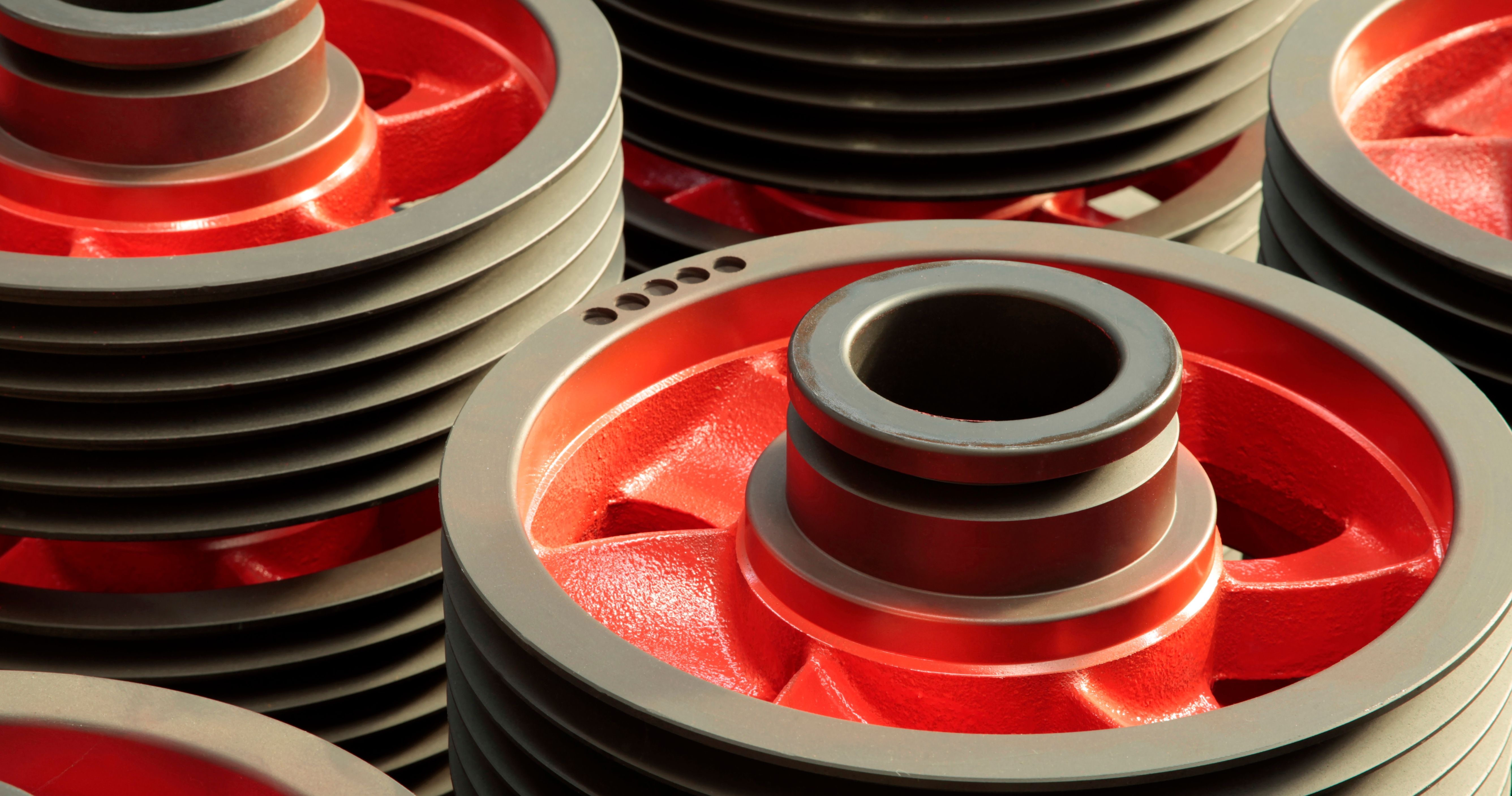UT3HCV
The “U” unitized oil seal designs incorporate a sleeve. They are more expensive and are generally used in mud or very dirty applications. They are frequently used on a shaft made of soft material. If more than three lips of an unitized seal have standard interference with a sealing surface, the shaft speed should not exceed 10”/sec (3m/sec.) Unitized seals can be designed to accommodate a small amount of shaft end play. Because of confinement, the heat at the sealing surface and lip interference must be dissipated by the fluid. Sometimes referred to as an oil bath seal. Installation tools are required to position the two components properly.
The following seal types are designed with bonded PTFE (Teflon®) wafers for high-performance applications: TCHPT, TCPT, VBRT, VB2T, TCT, TCJ, SCJ, SA2JI, DHA, SCV, TCJ, TA2JI, TB2HC1, THCV, SCPE, TCTHJ, MB20, MO, VA2T, TH3HC2, SCH, UDCPT, KC3, KCHP, TA2FA, TA3, DB2H1P, TB2VJ, UW, USA, UV, UTB2AJ1, DHJA, UTCA. A PTFE (Teflon®) wafer is bonded to rubber, and the rubber is bonded to the metal case. PTFE lip seals are for sealing aggressive media and sealing areas under high thermal stress. They are used in high speed and high temperature applications where there is sparse lubrication. In small water pump applications, a properly designed seal using a machined Teflon insert can resist up to 15 psi and not sacrifice the normal stiffness ratio between the flex thickness and beam length.
- Integrated Multi-Lip Design
- Pre-Assembled Cartridge Construction
- Durability in Extreme Conditions
- Durability in Extreme Conditions
- Durability in Extreme Conditions
Design
The rubber outside diameter provides optimized sealing ability in the housing, also at considerable surface roughness or in split housings. The beads on the outside diameter provide improved sealing ability and retention in the bore. They also prevent spring-back during installation.
The spring-loaded sealing lip contributes to a quick response in handling dynamic runout and maintaining the sealing performance, even when sealing lip wear is excessive.
Sealing lip and flex section are optimally balanced to withstand both high dynamic runout and shaft-to-bore misalignment. The auxiliary lip on HMSA10 seals is non-contacting, which means that the seals normally can operate at the same speeds as the single-lip HMS5 seals.
Material
The rubber outside diameter provides optimized sealing ability in the housing, also at considerable surface roughness or in split housings. The beads on the outside diameter provide improved sealing ability and retention in the bore. They also prevent spring-back during installation.
- We handle all makes and models
- We are endorsed by the local trading standards office
- All our technicians are equipped with the latest portable
- Proven results for setting exceptional standards
- Same day service for most repairs
The spring-loaded sealing lip contributes to a quick response in handling dynamic runout and maintaining the sealing performance, even when sealing lip wear is excessive.
Sealing lip and flex section are optimally balanced to withstand both high dynamic runout and shaft-to-bore misalignment. The auxiliary lip on HMSA10 seals is non-contacting, which means that the seals normally can operate at the same speeds as the single-lip HMS5 seals.
Applications and operating conditions
HMS5 and HMSA10 seals are designed for oil or grease lubricated applications with operating temperatures ranging from –40 to +100 °C (–40 to +210 °F), short-term up to 120 °C (250 °F). These seals are also appropriate for sealing lubricants within a wide range of viscosities.
| Circumferential speed: | up to 14 m/s (2 755 ft/min) |
|---|---|
| Operating pressure: | max 0.05 MPa (7 psi) |
Precision Sealing, Engineered
for Excellence.
For 70 years, Clark Seals has partnered with manufacturers in various industries to provide industry-leading products, services and supply-chain assistance.
Contact Us
